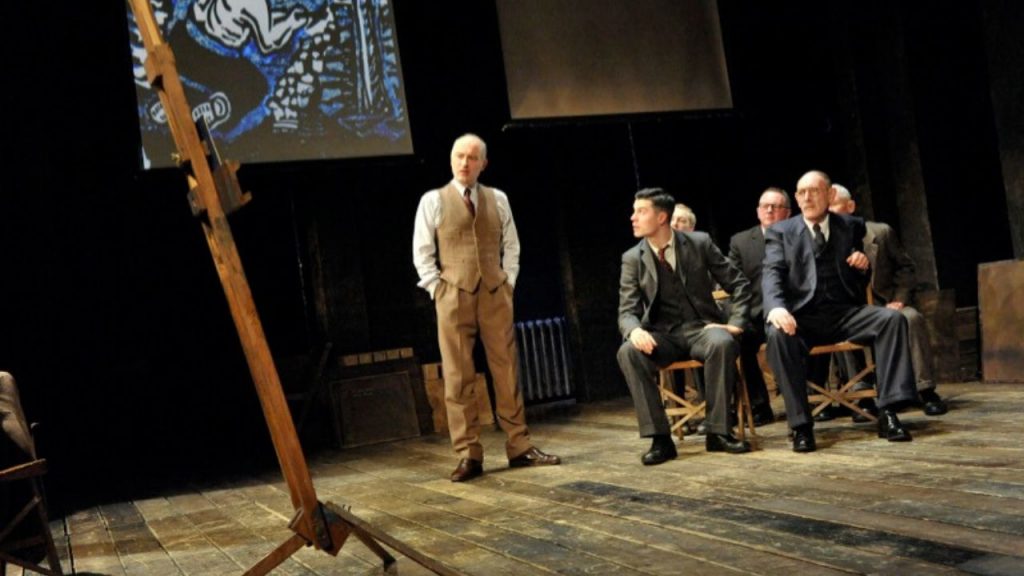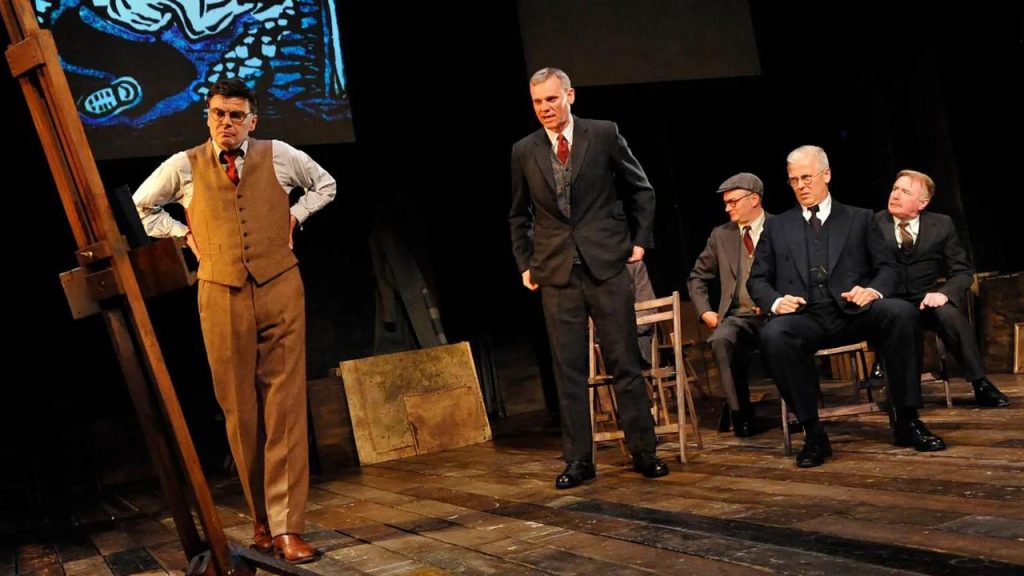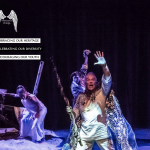The Pitman Painters paint their lives at the Richmond Theatre
The popularity of Lee Hall’s The Pitman Painters is evident from its sell-out seasons at the National Theatre, on Broadway and in the West End. Arguably, such success must make Hall’s play one of the past decade’s most significant English dramas to engage contemporary audiences in re-looking at “class warfare” in post-WW2 British culture. At Richmond Theatre.

The events of Lee Hall’s The Pitman Painters begin in 1934 as an unlikely group of Ashington miners are introduced to painting. The play focuses on how they go from “art appreciation” to gaining the attention of avant-garde art collectors through painting aspects of their working lives down in the mines and in the Ashington community.
Premiering at the National Theatre in 2007, the current production of the play at the Richmond Theatre is the NT’s On Tour production produced by Bill Kenwright, with Joe Caffrey as Harry Wilson, Philip Correia as Oliver Kilbourn and Suzy Cooper as the rich patroness, Helen Sutherland. The tour started in April this year in Chesterfield and will end on the 24th of this month in Swansea.
On a personal note, The Pitman Painters is the first play I viewed in January 2009, only days after arriving to live in London from Australia which, interestingly, was known in its colonial days as “the working man’s paradise”. It is a country which was also generous to post-WW2 migrant families like mine.
I remember speculating on my first viewing of the play that the achievements of the Ashington group were not dissimilar from the descendants of convicts and migrants who have gained recognition far above their social status: the fact that the group seem like strangers in their land was a fascination for me.
Undoubtedly, Lee Hall’s play has been responsible in its own right for raising awareness of the existence of the Ashington group and their artistic achievements. However, on viewing the play this time, I feel more inclined to agree with the 2010 New York Times critic who claimed that as “grounded in authentic detail” as the ensemble performers were, their characterisation often blurred into “an abstract, almost Brechtian chorus of voices”.
The reason for the lack of definition of individuals was due to the fact that I often found the pace of the dialogue in the first half of the play unnecessarily frantic. At times I even felt that I was looking at oafish miners with pretensions to do “art appreciation”, something I never imagined about the characters in the first production.

At one point, I felt myself reacting angrily towards assumptions that seemed built into the direction of certain scenes: for instance, in the scene in with the young model, Susan Parks, who arrives and attempts to pose nude, I felt the speed of the dialogue presented it as pure farce, rather than explore the possibility that the miners’ alarm of a young woman in the nude might be legitimately connected to deeply held conservative views of sexuality and relationships in general.
To my mind, it is that deeply held belief that offers a more credible view of the alienation from pleasure or sense of intimacy with wives, each other, and ultimately, themselves, that the play heroically explores.
In the second half of the production, however, the treatment of the arrival of World War II reasserts the power of the play in realising its central theme on how art is linked to the human need to depict the paradoxes of both our subjective and collective realities. Moreover, it shows how it is often absence that communicates the most about us, individually as well as culturally.
This is shown particularly poignantly in the absence of the young lad who, in the first half of the play, represents the unemployed of the Great Depression. In the second half, we find he has enlisted and that he is one of the casualties of the D-Day invasion. The effect of the lad’s departure and death is shown to have has a profound effect on those left behind, as once again they face the destructive force of war, which, ironically, raises the status of coal mining and protects them from having to do active service on any battlefield of Europe or elsewhere.
So what is ultimately to be understood about the Ashington group’s place in the UK’s art scene? And how is it representative of the “class struggle” present in British culture? It is hard to deny that Lee Hall’s play works as a kind of revisionist history of how the inclusion of the working class group adds to the dynamism of British culture as a whole. For this, Hall’s portrayal of the struggle of miners caught up in the sweeping world events as The Pitmen Painters depicts their lives and paintings as worthy of enduring significance.
Date reviewed: Monday 5th August 2013






